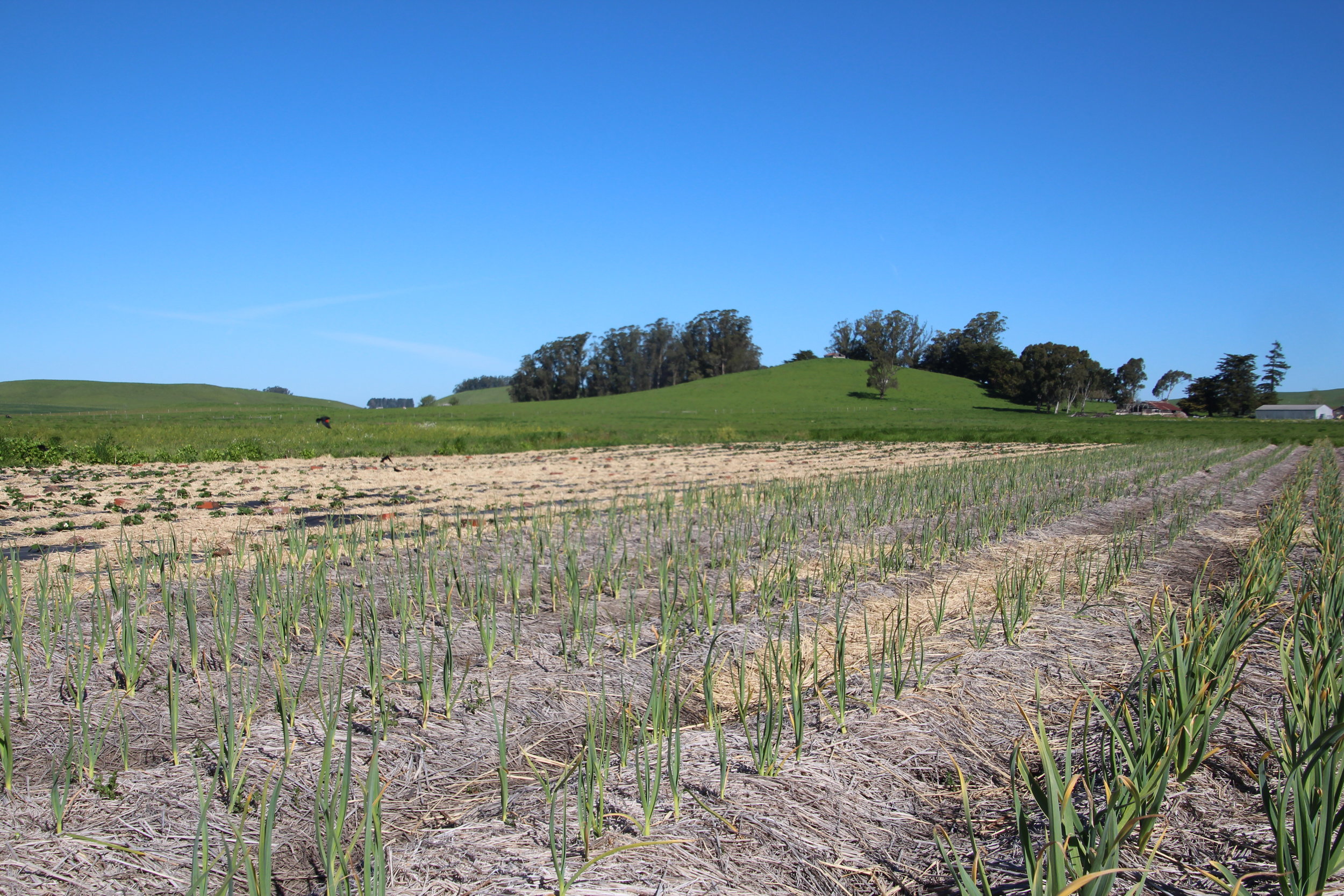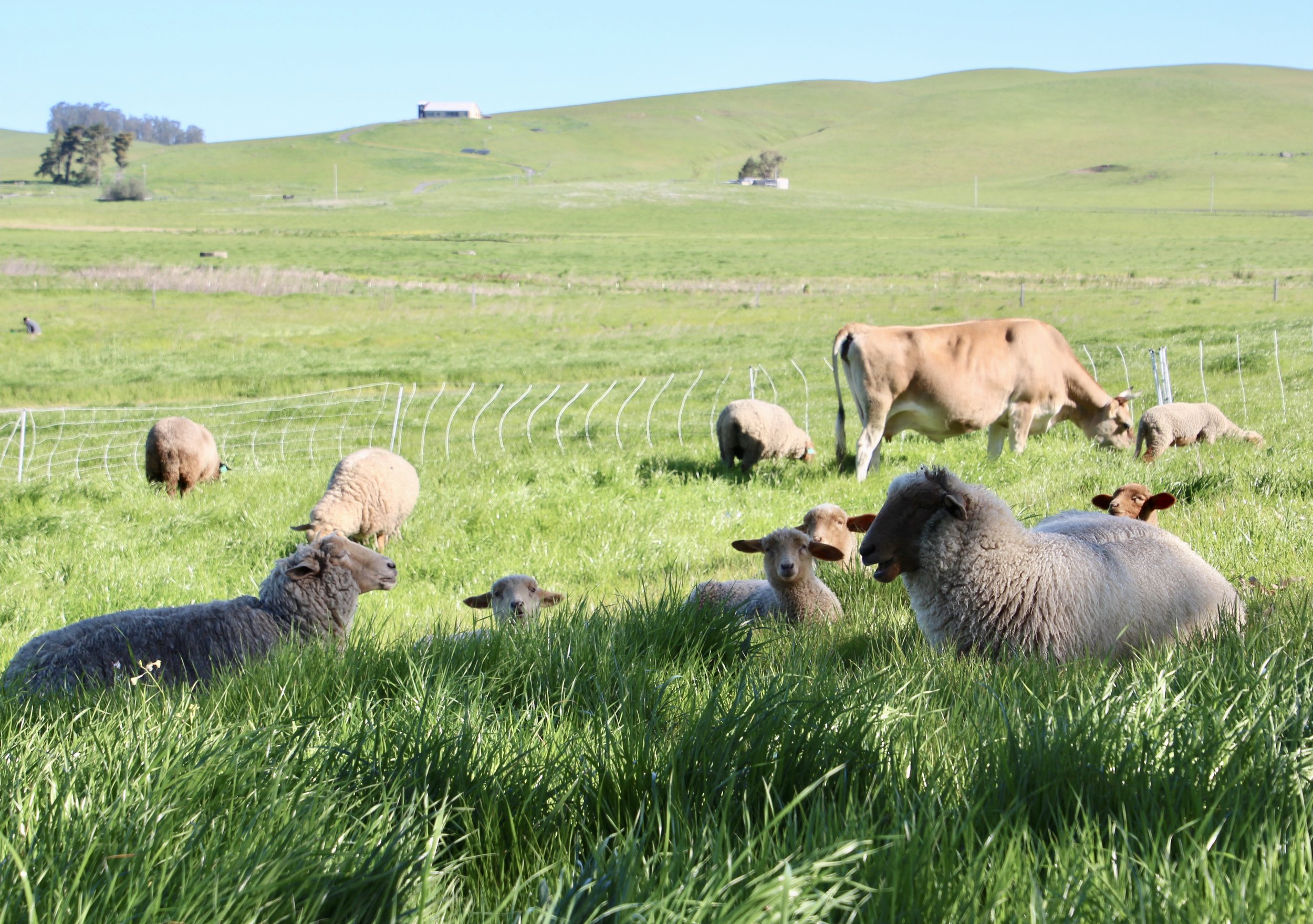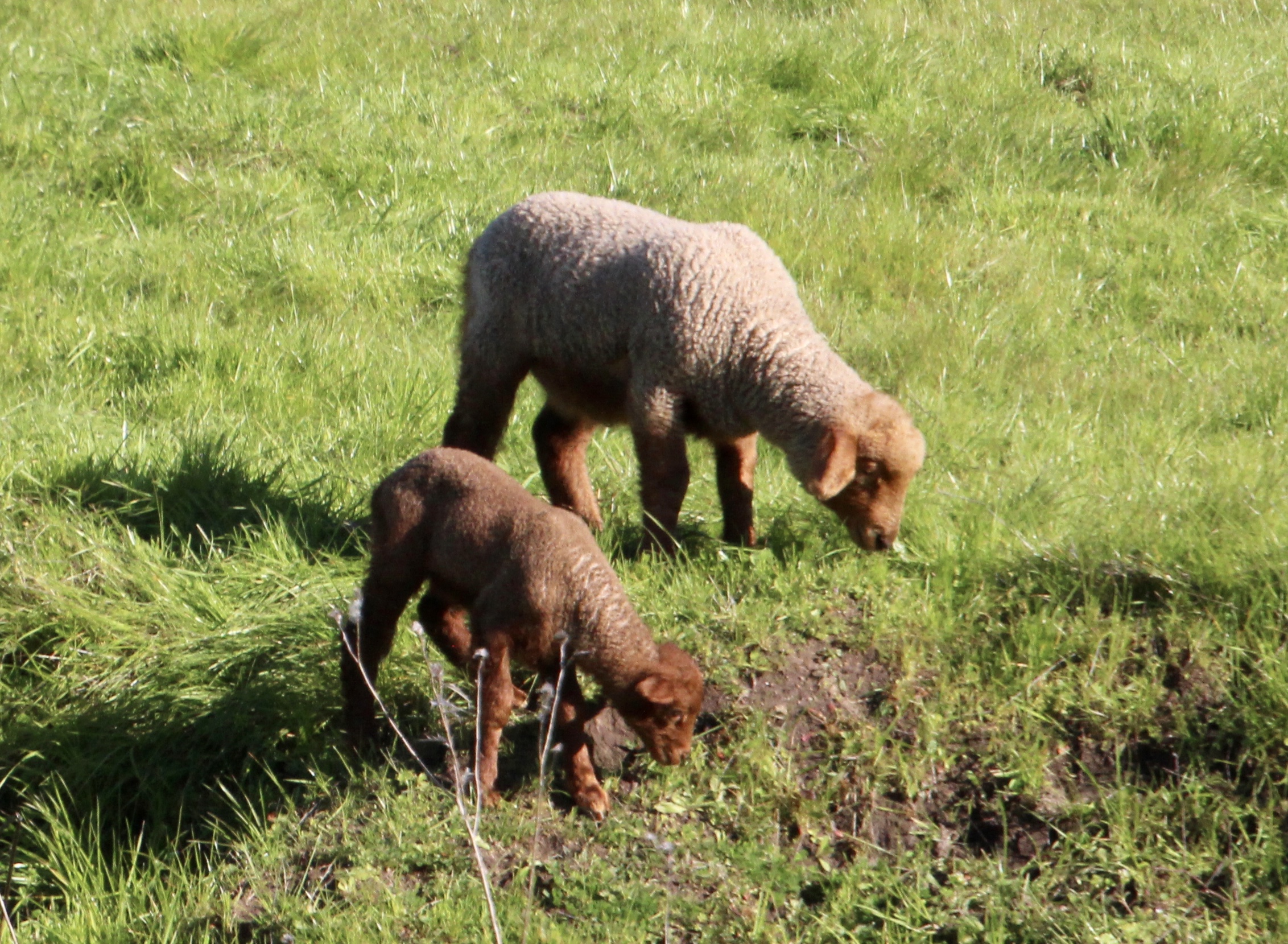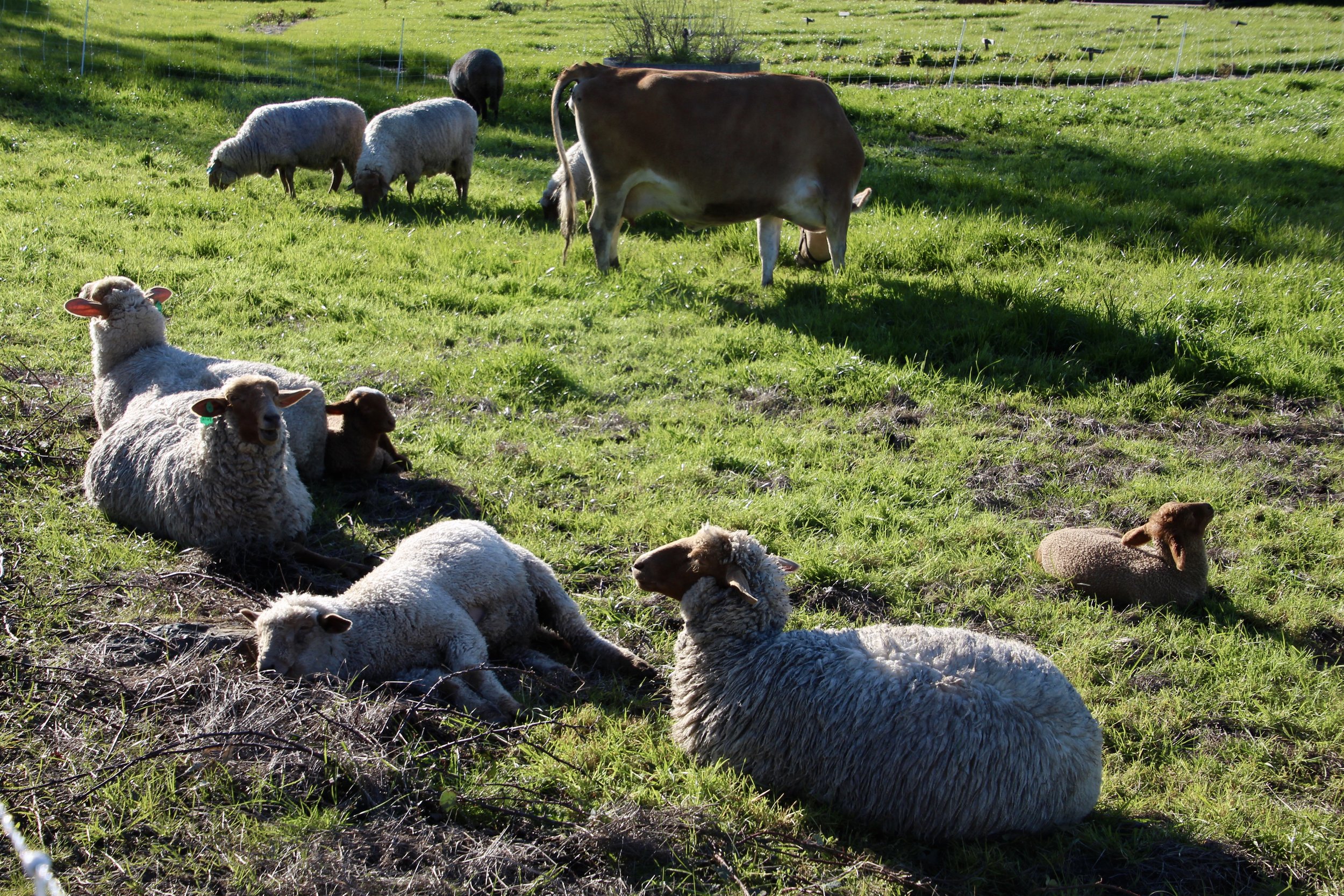The fields are almost all planted. We are starting to replant many of them in preparation for fall. The plants are filling in, covering the soil, and turning the fields into a solid sea of green, dotted with yellow from the mustard weeds.
We are focused on weeding this week, trying to get a jump on the young weeds and to rescue overgrown beds.
This week's pick list:
- Carrots
- Radish
- Snap peas
- Shelling peas
- Summer squash
- Cucumbers
- Fennel
- Scallions
- Lettuce
- Chard
- Kale
- Collards
- Garlic Scapes
- Kohlrabi
- Cilantro and Dill
- Strawberries
Chard Stem Hummus, from food52.com
Makes 1 cup
- Chard stalks from 1 pound whole chard, trimmed and chopped
- 1 whole clove garlic or scape
- 1/4 cup tahini
- 1/4 cup extra-virgin olive oil, plus more for drizzling
- 2 tablespoons fresh lemon juice
- 1/2 teaspoon kosher salt
Bring a large pot of water to boil and cook the stalks until very tender, 18 to 20 minutes. Drain.
Place the garlic in a food processor and pulse until chopped. Add the chard stalks and purée, then add the remaining ingredients and process until very smooth.
Transfer to a shallow bowl, drizzle with olive oil, and serve at room temperature. The hummus also can be stored in the refrigerator for up to 3 days. Return to room temperature before serving.


































































